
A Work Commenced August 1 2025
Product: Svbony SV 202 ED 10 x 42 Mark II
Country of Manufacture: China
Chassis: Magnesium alloy housing overlaid with textured black rubber
Exit Pupil: 4.2mm
Field of View: 114m@ 1000m( 6.5 angular degrees)
Close Focus: 2.5m advertised, 2.02m measured
Light Transmission: 90% advertised
Coatings: Fully Multicoated, phase corrected prisms
ED Glass: Yes
Dioptre Compensation: +\-3
Waterproof: Yes, IPX7 rating
Nitrogen Filled: Yes
Tripod Mountable: Yes
Accessories: Padded case, Neoprene padded neck-strap, Rain guard, tethered objective lens caps, lens cleaning cloth, instruction manual
Weight: 694g advertised, 659g measured
Price(UK): £139.99
About four years back, I alerted the community to an inexpensive series of binoculars – Svbony’s SV 202s – offering optical performance well above what I expected from their price class. Since then, thousands of units are now in the hands of an army of outdoor enthusiasts in Europe, the Far East, the Antipodean, and the United States . So when Svbony decided to give their SV 202 series a makeover, I was naturally curious to see what changes had occurred. I ordered up the 10 x 42 to put it through its paces, and the following is a summary of my findings.
A Great New Look
Although the neat package containing the instrument was the same as before, a cursory examination of the binocular showed some notable changes. For one thing, the rather tough armouring of the original SV202 had been replaced by a softer but thicker rubber substrate that offers a finer grip than the first generation models. In addition, the company’s name is now proudly displayed on the side of the binocular giving it a more classy look.

The next thing I noticed was its very light weight for a binocular in this aperture class. While the original 10 x 42 tipped the scales at just under 700g, the new SV202 weighed in at just 659g, making it arguably one of the lightest 10 x42s I’ve personally encountered!
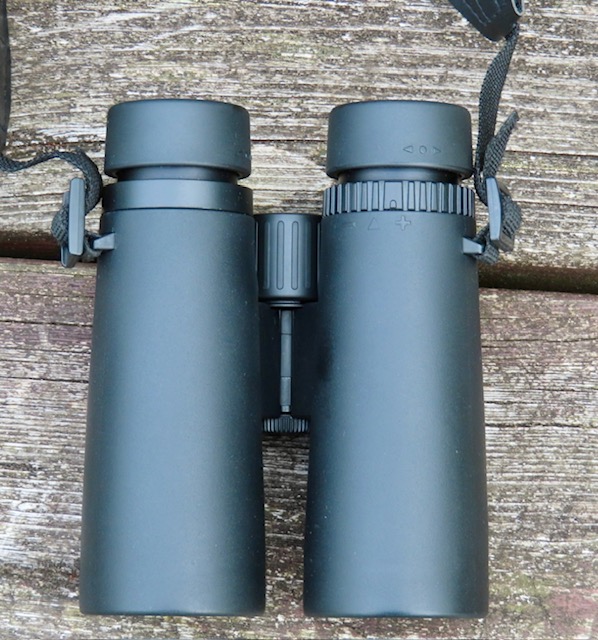
Another surprise hit me when I started moving the focus wheel; gone is the old metal focuser. Its replacement is covered with soft, indented rubber which is very smooth and responsive. My unit has zero free play or backlash: indeed it’s one of the best focusers I’ve seen in quite a while, certainly better than the original model. A little over two rotations anticlockwise takes you from closest focus to a little beyond infinity – good news for those who suffer from moderate myopia.
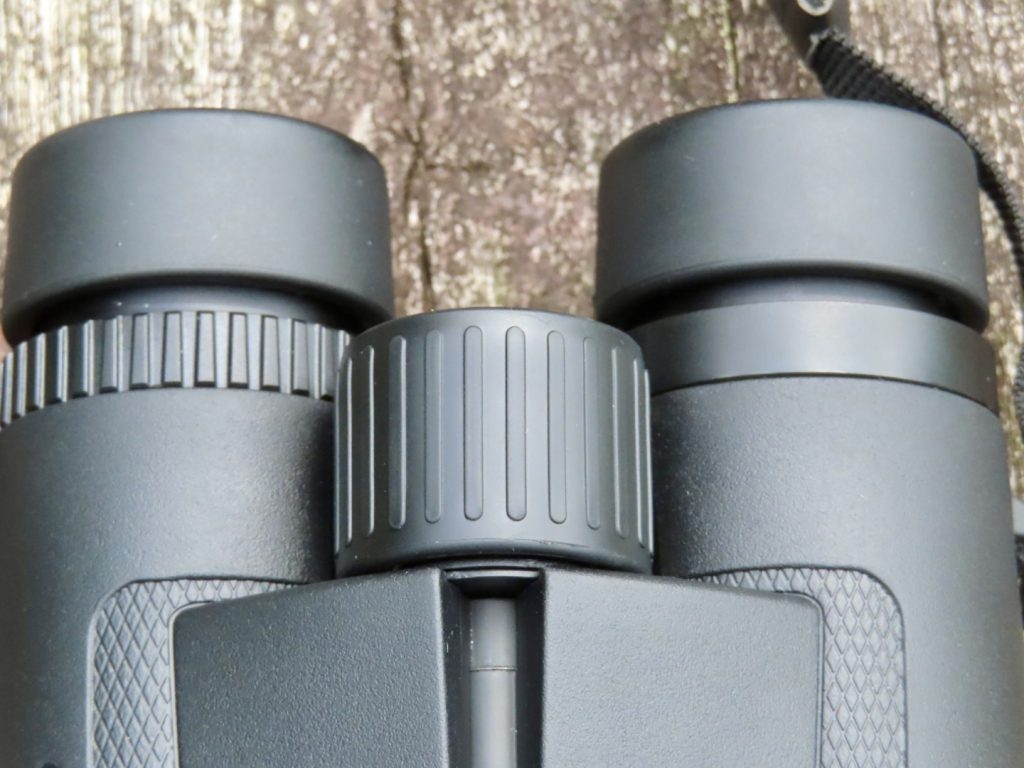
The right eye dioptre compensation ring moves smoothly but holds its position rigidly. Nothing fancy here: but it certainly does the job!
The twist-up eyecups have three positions and lock in place firmly with a moderately loud ‘click.’ They are, in fact, just as solid as the original models though, and actually a bit better built than on their flagship binocular – the SA205. Eye relief is fairly generous: I was comfortably able to view the entire field wearing my eye glasses.
The next surprise came when I examined the coatings applied to both the objective and ocular lenses. Gone is the deep magenta bloom used on the earlier model SV202, replaced by more conventional tobacco coloured coatings that are noticeably less reflective than the original.
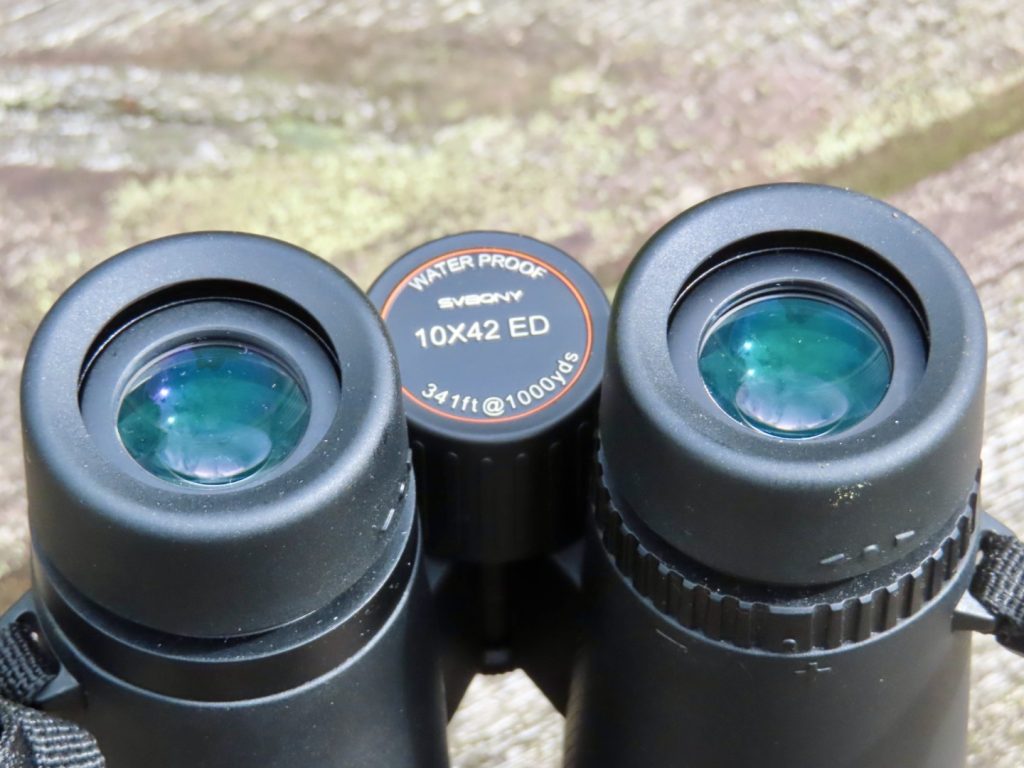
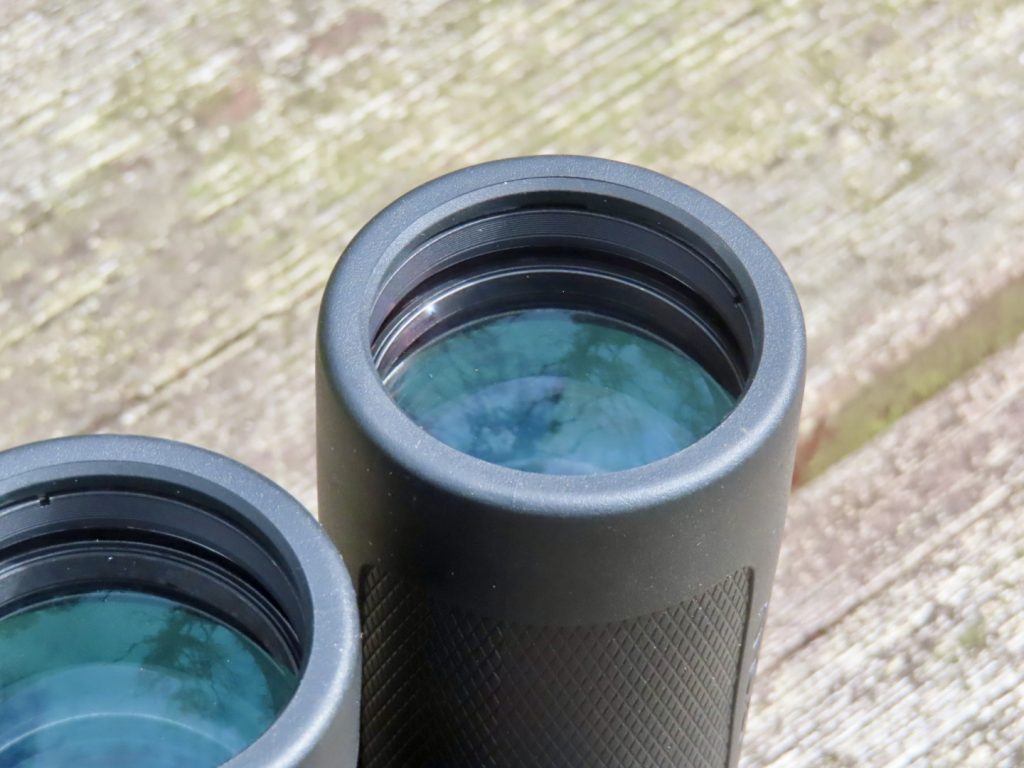
Like the first-generation models, the objectives are deeply recessed to protect the lenses from the elements as well as stray light.
In the hands the new SV202 ED binocular feels great: easy to grip and easy to wrap your hands round the barrels. And it’s very light weight- more like some heavier 32mm binos I’ve encountered – making it especially comfortable on long walks.
All in all, the ergonomic changes to the new SV202 ED were a very pleasant surprise and most certainly render the instrument more fun to use.
Optics
Examining the image of a bright beam of light from across my living room showed no significant diffraction spikes but did show a few annoying internal reflections. The same was true when I examined a bright street lamp after dark in the distance. This is definitely an inferior result to my findings with the original SV202, which showed far less in the way of internal reflections.
A clue to what was going on ‘underneath the bonnet’ as it were was revealed when I examined the exit pupils seen against a bright indoor lamp. As the images below show, there are significant light leaks immediately in the vicinity of the pupils which were responsible for the only negative finding I picked up in my daylight glassing tests.
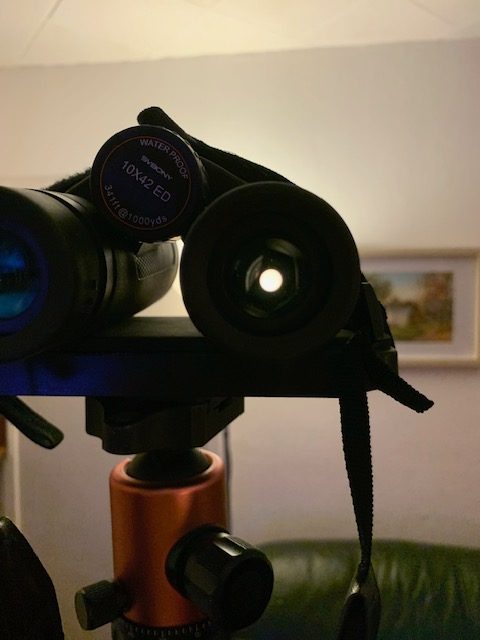
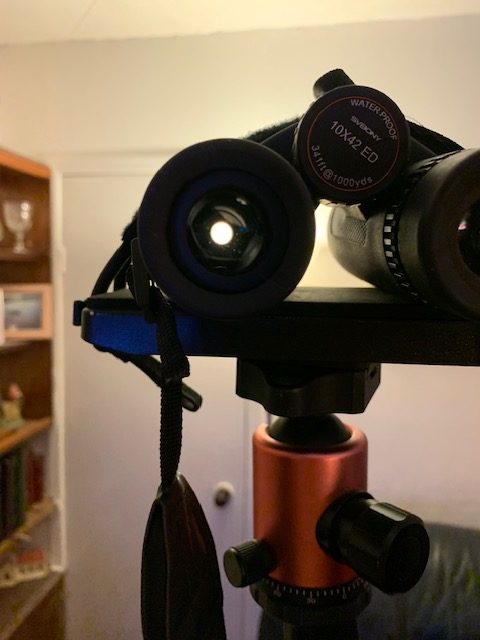
The view through the SV202 10 x 42 ED is very good; bright, sharp, high contrast, with neutral but saturated colours. Suppression of chromatic aberration is also excellent. Indeed I was expecting significantly more given that this is a 10x instrument. Glassing through layers of leaves against a bright overcast sky showed up just a trace of lateral colour in the outer 15 per cent of the field. There is some moderate pincushion distortion though, which does help somewhat with comfortable panning. Glassing against the light or placing the sun at an oblique angle to my line of sight did throw up a bit of lens flare but that is probably the only personal issue I had with this unit. Edge of field sharpness was also very good: only a small amount of field curvature softens the image just inside the field stops.
Overall , the Mark II SV202 10 x 42 ED is very impressive when you consider the very reasonable price tag this instrument comes with.
Notes from the Field
I afforded the most comfortable and immersive views by extending the eyecups into the first locking position, as seen in the photographs. Close focus was found to be just over 2m, a significant improvement over the 2.5m advertised. The excellent focus wheel makes finding the sharpest possible view quick and easy. Conducting most of my daytime glassing using 8 x binoculars, shifting back to 10x shows a noticeably shallower depth of field, as you’d expect.
10 x 42 binos are very popular with hunters who need that extra bit of reach or those general observers who enjoy seeing fine details. I did find the instrument a little tricky to hold steady on the afternoon of August 4, when Storm Floris swept its way northeastward across the country, bringing with it inland gusts up to 60mph. A weightier instrument would definitely fare better under these conditions.
Turning the instrument on the August night sky generated impressive views of the starry heavens. The first quarter Moon was tack sharp and without colour fringing inside its generous sweet spot but a very modest amount of lateral colour creeps in: blue on one side of the field and yellowish-green on the other. I did pick up a few internal reflections though as reported earlier.
Star clusters look great in the Mark II 10 x 42ED and goes considerably deeper than any 8 x glass. Collimation is good. I enjoyed observing the Alpha Persei Cluster, the Double Cluster, the Andromeda Galaxy and its fainter satellites, M33 in Triangulum, and the Coathanger asterism in Vulpecula. Lying back in my zero gravity chair I enjoyed tracking down other smaller clusters, panning the Milky Way through Cygnus and Cassiopeia. Because field curvature is so mild, even stars at the edges of the field remain quite well focused – an impressive result for a binocular without field flatteners.
Conclusions & Recommendations
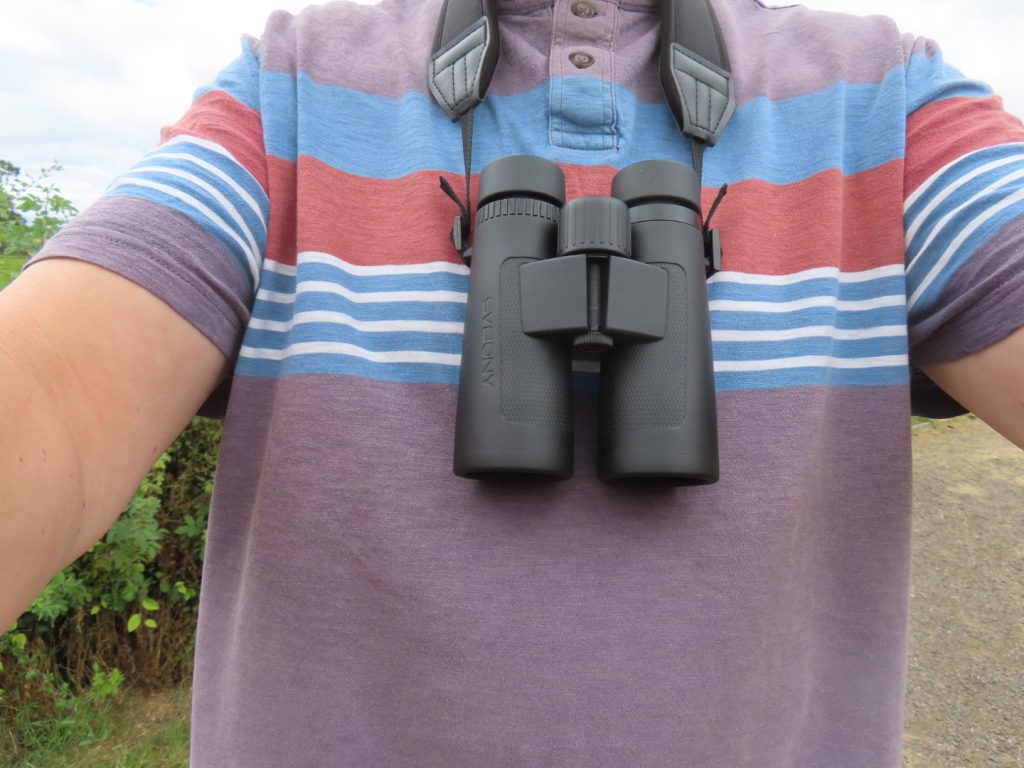
In many ways, the Mark II Svbony SV202 10 x 42 ED is an improvement over the original model, with better ergonomics, a wider field of view, less colour fringing, and lower weight. At its current retail price you’d be very hard pushed to get an instrument this good at twice the price. It remains a solid performer and one of the best bangs for buck on the market today.
Be sure to check it out!
Dr Neil English explores the fascinating world of binoculars in his detailed book, Choosing & Using Binoculars: A Guide for Stargazers, Birders and Outdoor Enthusiasts
Hi Neil, thank you so much for your review. I have experience with bird photography but am new to the world of binoculars. I’ve been deep down the rabbit hole over the last few weeks researching different models. It’s surprisingly hard to find good information, and it wasn’t until just a couple days ago that I became aware of the SVBONY SV202 as an option. Your reviews have been very helpful.
I’m curious about your thoughts on the new upgraded SV202 8×32. From the information I’ve found so far, it’s unclear if the upgraded model is a better choice than the original SV202 8×32. I am considering these binoculars an alternative to the Vortex Diamnondback HD 8×32. My expectation is that the SV202 would be closer in quality to the more expensive Nikon M7 8×30 and the Celestron TrailSeeker ED 8×32, while being less than half the cost of the Vortex.
Thanks
Sep
Hi Neil,
Do I understand you correctly that you would rank the SV202 Mark II between the original SV202 and their flagship model, the SA205? But it’s closer to the SV202, right?
Thanks for all your efforts!
Markus
Hi Markus,
That’s probably a good way of putting it. Overall, I think it’s a better binocular than the original SV 202.
Regards,
Neil.
I’ve just received the new upgraded SV202 8×32 and I’m very impressed.
Good to hear that Marco! Enjoy!
Neil
Dear Niel
How about a direct comparison on the Svbony SV 202 Mark II, the SA 205 and the SRBC all in the same configuration 8×42, the classic instrument size?
Do you know which factory hides behind the Svbony binos? Dr. Merlitz reports United Optics behind SRBC and they link Sky Rover from the United Optics homepage.
Best regards
Michael
https://shorturl.fm/ZYbnD